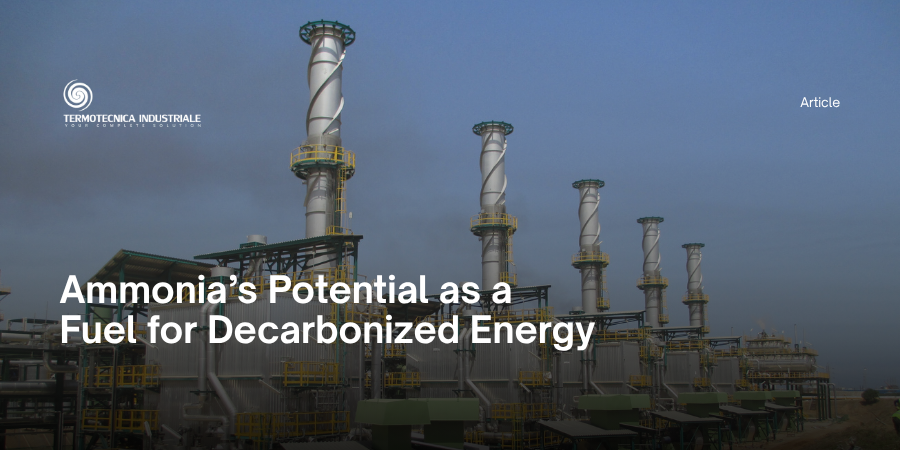Ammonia emerges as one of the most promising alternative fuels in the global quest for sustainable and carbon-free energy solutions. Amid growing concerns about climate change and increasing pressure to reduce greenhouse gas emissions, traditional hydrocarbons face stringent scrutiny and legislative limitations. Ammonia, conventionally used as a fertilizer, is now Ammonia emerges as one of the most promising alternative fuels in the global quest for sustainable and carbon-free energy solutions. Amid growing concerns about climate change and increasing pressure to reduce greenhouse gas emissions, traditional hydrocarbons face stringent scrutiny and legislative limitations. Ammonia, conventionally used as a fertilizer, is now gaining substantial interest as an effective energy carrier and direct combustion fuel due to its favorable storage, transport, and energy density characteristics.
The chemical composition of ammonia, comprising nitrogen and hydrogen, positions it uniquely as a carbon-free energy vector. Its high hydrogen density, approximately 17.8% by mass, significantly surpasses other hydrogen carriers, offering practical advantages over pure hydrogen, particularly regarding storage and distribution infrastructures. Remarkably, liquid ammonia at moderate conditions (around 10 bar at ambient temperature) contains a higher hydrogen density per volume compared to hydrogen even under extremely high-pressure and cryogenic conditions. This advantage leverages existing industrial-scale infrastructure for safe storage and transport, providing considerable efficiency and safety benefits. Consequently, ammonia presents itself as an ideal candidate for facilitating the global trade of hydrogen, particularly “green ammonia” produced from renewable energy sources such as solar-powered electrolysis, especially in regions with abundant solar resources.
However, a fundamental question arises: why reconvert ammonia back to hydrogen for combustion when it can be directly utilized as a fuel? Utilizing ammonia directly as a fuel can eliminate the additional energy and infrastructure costs associated with hydrogen reconversion.
Despite these advantages, utilizing ammonia directly presents substantial technical challenges, including its relatively low reactivity, narrow flammability limits, flame instability, and the generation of nitrogen oxides (NOx). The combustion characteristics of ammonia thus require thorough investigation and understanding to optimize its efficiency and mitigate emissions. Current research and industrial efforts focus extensively on enhancing ammonia’s combustibility through blending with other fuels such as hydrogen or methane, and by employing advanced combustion technologies. Notably, Termotecnica Industriale is actively investing in ammonia combustion technology, aiming to develop its first 100% ammonia burner in the near future.
Comparatively, ammonia exhibits unique combustion properties distinct from conventional fuels. Its lower heating value and flame speed necessitate specialized combustion systems capable of stable and efficient operation under various conditions. Advanced numerical simulations, including equilibrium analyses and complex Computational Fluid Dynamics (CFD), have become essential tools in characterizing ammonia combustion behavior. These simulations provide vital insights into flame stability, reaction pathways, and pollutant formation, guiding the development of optimized combustion chambers and emission control strategies.
Ammonia’s integration into energy systems represents a pivotal development towards achieving global decarbonization goals. Its compatibility with existing energy infrastructures, combined with the potential for renewable production methods, positions ammonia as a compelling candidate to significantly contribute to the sustainable energy transition. Continuous research, development, and deployment of ammonia-based energy systems hold great promise for a cleaner, sustainable future, as ammonia serves as both an effective energy carrier and a direct combustion fuel, thanks to its favorable storage, transport, and energy density characteristics.
Credits to Domenico Carucci



